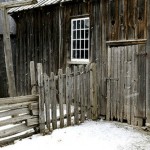Every July, an annual festival recalls an era when “The Greatest Show on Earth” may have been staged in Indiana.
Peru’s Circus City Festival includes a parade that’s not only the second largest in Indiana, but one of the only remaining circus parades in the United States, highlighting vintage painted wagons, costumed acrobats, clowns and exotic animals. During its heyday, a circus parade would serve as an advertisement for the show, trailing select tableaux down the town’s main drag before the big top opened at the midway.
Peru, Indiana bills itself as the Circus Capital of the World, and rightly so. The convergence of east-west and north-south railroad lines in north-central Indiana in the second half of the nineteenth century made Peru the ideal headquarters for a mobile show biz unit, members of which ran to the four-legged and multi-tonned.
Peru-based Hagenbeck-Wallace Circus was, at its peak, second only to Ringling Brothers and Barnum & Bailey. In operation from 1884 through 1938, the Hagenbeck-Wallace Circus counts among its alums some of the industry’s most illustrious entertainers, including the clowns Emmett Kelly and Joe Skelton—Red’s father—and the lion tamer Clyde Beatty. The company’s winter quarters in Peru have been designated as an historic landmark and serve as the Circus Hall of Fame Museum.
Incidentally, the Fourth of July Parade in Linton, is recognized as the state’s largest, bringing 40,000 people into the town of under 6,000. Dating to 1905, the Linton event stands in the shadow of New Pekin when it comes to Independence Day. The Washington County town is home to the oldest consecutive Fourth of July celebration in the U.S. , which has recurred annually since its inception in 1830.





















